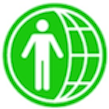Perfume of Peace Helps Farmers Switch From Drug Trade
 Wednesday, July 1, 2015 at 11:18AM
Wednesday, July 1, 2015 at 11:18AM
A tragedy in a time of war has led to a social enterprise that is creating jobs – and making the world smell a little better, too.
The 7 Virtues perfume range was started by Canadian Barb Stegemann (http://www.barbstegemann.com/barb-stegemann-in-the-news.html) to harness the energy of social enterprise and women’s buying power to change the dynamic of war and misery created by conflict around the world.
Stegemann ran a successful public relations company when she was inspired to do something after tragedy struck a good friend who was serving in Afghanistan with the Canadian Armed Forces as part of the NATO mission (http://www.isaf.nato.int/). Hit on the head with an axe while involved in a village meeting, Captain Trevor Greene was thought to be fatally injured but survived, though he is still unable to walk.
The violent attack shocked Stegemann into action. The enterprise was founded not out of hatred and revenge, but as a way of addressing the serious economic problems and poverty of Afghanistan.
Wanting to do something, Stegemann was referred to the Turquoise Mountain Foundation (turquoisemountain.org), which is based in Afghanistan’s capital, Kabul. The Turquoise Mountain Foundation is a social enterprise working in Afghanistan to regenerate the country’s traditional arts and historic areas in order to create jobs and boost skills.
Stegemann was inspired by a farmer called Abdullah Arsala from Jalalabad in the eastern part of the country. He was growing the ingredients for making essential oils, rather than the much more lucrative opium poppies which are used to make the drug heroin and help fuel a vast global illegal drug trade. Heroin addiction ruins many lives around the world and often leads to crime and violence.
The Turquoise Mountain Foundation did a study and found that if farmers could be paid US $9,912 for a litre of rose oil or US $7,994 for orange blossom oil it would be enough of a market incentive to lure them away from growing opium poppies.
Stegemann decided to provide that incentive.
Using her life savings, she established a perfume company. To start, Stegemann bought Arsala’s entire stock of orange blossom oil. After getting further investment through the Canadian television program Dragons’ Den – on which entrepreneurs compete for funding – she launched the company with two perfumes: Orange Blossom of Afghanistan and Noble Rose of Afghanistan.
With the whole collection rebranded as The 7 Virtues (http://www.the7virtues.com/), the Afghanistan Orange Blossom went on sale at the prestigious Selfridges department store in London, U.K.
Using Arsala as a go-between, 2,500 farmers in Afghanistan are now supplying essential oils for the perfumes.
To further expand the concept, Stegemann has launched Middle East Peace (http://www.the7virtues.com/middle_east_peace.php), a perfume made from sweetie grapefruit oil from Israel with lime and basil oils from Iran.
In Haiti, a country still recovering from the 2010 earthquake disaster and decades of grinding poverty and political and economic chaos, she has created a scent for men using fragrant grass.
She hopes to also do the same for Rwanda and Syria.
The perfumes are all-natural and are put together in Toronto, Canada. They are sold in stores in Canada and the United States, as well as Selfridges in London.
The success has snowballed and a special gift pack has been put together for American Airlines.
“I never imagined I’d end up on a beauty counter, but this is where the women are and we must connect with them if we are going to reverse this cycle of war and poverty,” Stegemann told The Sunday Times. “Imagine if there were 300 women like me doing things like this. We could make a real difference.”
By David South, Development Challenges, South-South Solutions
Published: November 2013
Development Challenges, South-South Solutions was launched as an e-newsletter in 2006 by UNDP's South-South Cooperation Unit (now the United Nations Office for South-South Cooperation) based in New York, USA. It led on profiling the rise of the global South as an economic powerhouse and was one of the first regular publications to champion the global South's innovators, entrepreneurs, and pioneers. It tracked the key trends that are now so profoundly reshaping how development is seen and done. This includes the rapid take-up of mobile phones and information technology in the global South (as profiled in the first issue of magazine Southern Innovator), the move to becoming a majority urban world, a growing global innovator culture, and the plethora of solutions being developed in the global South to tackle its problems and improve living conditions and boost human development. The success of the e-newsletter led to the launch of the magazine Southern Innovator.
Follow @SouthSouth1
Google Books: https://books.google.co.uk/books?id=2fdcAwAAQBAJ&dq=development+challenges+november+2013&source=gbs_navlinks_s
Slideshare: http://www.slideshare.net/DavidSouth1/development-challenges-november-2013-issue
Southern Innovator Issue 1: https://books.google.co.uk/books?id=Q1O54YSE2BgC&dq=southern+innovator&source=gbs_navlinks_s
Southern Innovator Issue 2: https://books.google.co.uk/books?id=Ty0N969dcssC&dq=southern+innovator&source=gbs_navlinks_s
Southern Innovator Issue 3: https://books.google.co.uk/books?id=AQNt4YmhZagC&dq=southern+innovator&source=gbs_navlinks_s
Southern Innovator Issue 4: https://books.google.co.uk/books?id=9T_n2tA7l4EC&dq=southern+innovator&source=gbs_navlinks_s
Southern Innovator Issue 5: https://books.google.co.uk/books?id=6ILdAgAAQBAJ&dq=southern+innovator&source=gbs_navlinks_s

This work is licensed under a
Creative Commons Attribution-Noncommercial-No Derivative Works 3.0 License.

